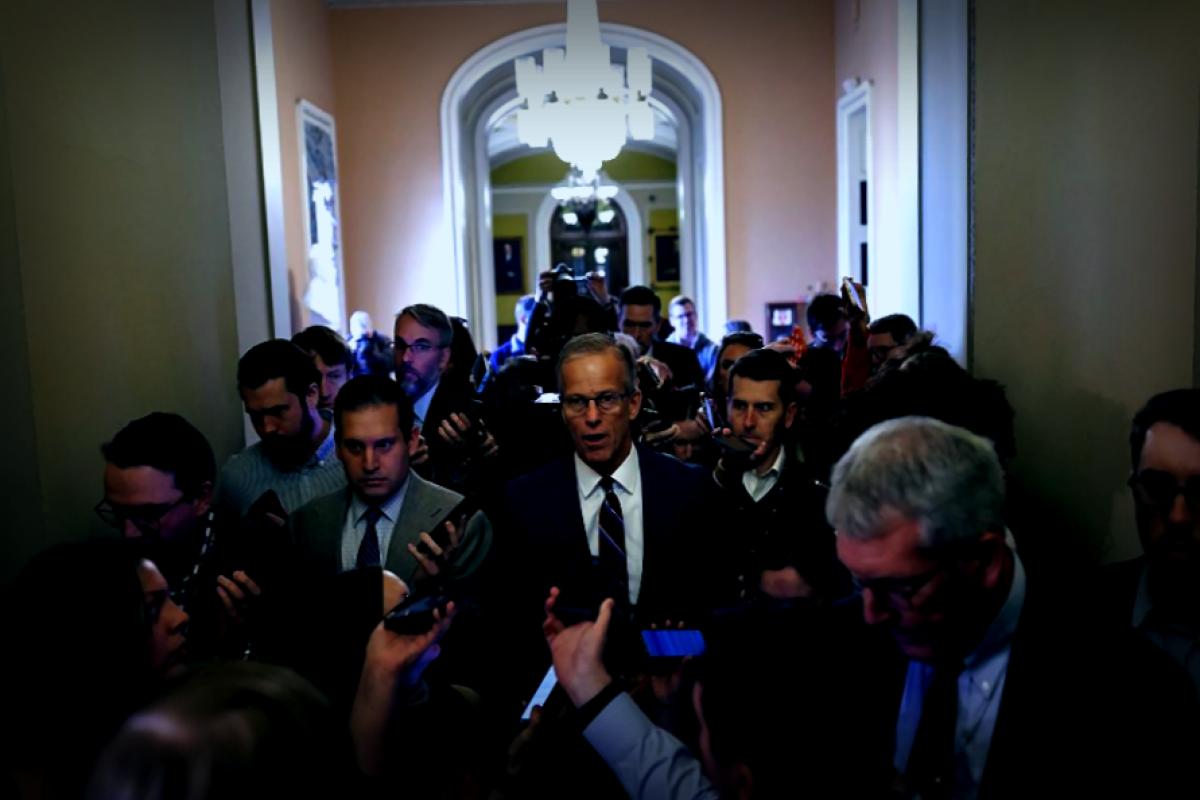The Senate recently wrapped up a deal that ended the longest government shutdown in the history of the United States. This breakthrough came about when eight Democrats broke from party lines to join Republicans in prioritizing a resolution over pressing healthcare matters.
With a decisive 60-40 vote, the Senate secured funding for the government until January 30, sending the ongoing resolution to the House of Representatives, which will review it soon.
The core disagreement has revolved around the Republican Party’s unwillingness to agree to Democratic demands to extend federal subsidies for individuals purchasing healthcare on the Affordable Care Act (ACA) marketplace. These subsidies, crucially introduced during the pandemic and later extended via the Inflation Reduction Act (IRA) in 2022, are set to run out by year’s end.
The Democrats aimed to prevent a spending bill proposed by President Donald Trump from passing without these extensions, while Republicans maintained a tough stance – often sharing misleading narratives regarding the Democrats’ intentions. Polls indicated, however, that public opinion largely blamed Trump and his party for the shutdown fiasco.
The Democrats Complicate Matters
On Sunday, the situation shifted as the group of eight Democrats decided to cave, at least temporarily. In return for their votes to terminate the shutdown, Senate Majority Leader John Thune (a Republican from South Dakota) assured these members that there would be a vote mid-December concerning their preferred extension bill for ACA subsidies.
This deal postpones the controversy rather than resolving it. Senator Tim Kaine, one of the eight Democrats, defended his position, arguing that their actions ensure a vote for expanding ACA premium tax credits—something Republicans previously neglected—instilling confidence that this vote could ultimately result in extending those subsidies.
Impact of Ended Subsidies on Healthcare Costs
Subsidies significantly help Americans purchasing healthcare through Obamacare. As of 2025, around 24 million people secured insurance through the ACA marketplace, with the Center on Budget and Policy finding that 93% of these enrollees benefited from tax credits that significantly lowered their expenses.
However, if the ACP subsidies cease to exist, estimates suggest that health insurance premiums could actually double or triple for the 22 million Americans who currently qualify for these enhanced subsidies. Significantly, 57% of the ACA marketplace enrollees reside in districts represented by Republican Congress members.
Particularly vulnerable are older adults; the subsidies contributed to a 50% drop in uninsured rates among individuals aged 50 to 64.
The Congressional Budget Office (CBO) estimates indicate that more than 4 million additional people may find themselves uninsured if health perhaps undergoes disruptions due to subsidy expirations.
Read More: Possible Delays in Ending the Government Shutdown
As uninsured rates rise, the consequences can include escalating Medicare costs and increased pressure on hospitals across the country.
The Medicare Rights Center has highlighted that an increase in uninsured people will lead to higher Medicare expenses because many will likely join the program in worse health, necessitating more costly care interventions.
Additionally, as the pool of insured individuals deteriorates, local health providers and governments could face overwhelming challenges, which could have ripple effects through the entire community. Mark Shepard, an associate professor at the Harvard Kennedy School of Government, notes, There’s a follow-on effect of loss of insurance that ends up affecting governments and health providers in the local community.
Moreover, health insurers, not just those depending on ACA subsidies, are preparing for impacted repercussions from subsidy expiration, leading to expected volatility in the market.
This situation could reflect in heightened premiums for everyone resorting to the ACA marketplace or even those relying on off-exchange plans, typically aligned with rates linked to ACA-compliant plans.
As a reaction to rising costs in the ACA marketplace, patients may also shift more onto employer-sponsored insurance, although businesses could pass this financial burden down to workers.
A recent September report from Mercer indicated that health benefit costs per employee are predisposed to surge by 6.5% on average in 2026, scaling up to the steepest rise seen in over 15 years. Based on feedback from over 1,700 US employers, about 59% are anticipating to introduce cost-cutting measures across their benefit plans in 2026.



















